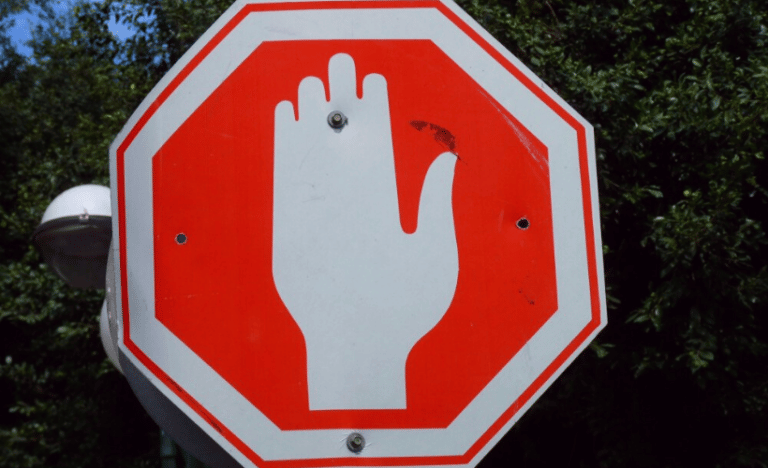
Should public transportation be allowed on Shabbat in Israel, or should it be prohibited?
As much as the Arab-Israeli conflict consumes the vast majority of the pro-Israel world, since I was a senior in high school, I remember debating this very question with one of my closest friends, Amir Tsemach. This question just fascinates me. The reason I am so enamored with this question is because how we go about answering this question cuts to the heart of what we believe the Jewish state should look like.
What does it mean for Israel to be a Jewish state? Or, more directly, what kind of country does Israel want to be? What kind of country do we want Israel to be? What is the raison d’être of the Jewish state?
Paraphrasing from the Jewish Agency, there were three main ways to imagine what a democratic Jewish state could look like before the state was established:
- The state must be democratic, where all Jews will decide what a Jewish life can look like. Groups who want to live their lives according to halakha can do so as long as it does not impinge on others who live differently.
- A Jewish state means a Jewish state, driven by halakha. What people do in their own homes is their decision, but the public square must be one in which halakha drives public behavior.
- A Jewish state is secular and democratic, but certain aspects of public life should be Jewish and determined by religious leaders as opposed to democratic vote.
The people of Israel continue to debate which of these three approaches to a democratic Jewish state is ideal, but the third approach is how the state of Israel mostly behaves.
Sixteen years after high school, Amir and I are still debating this question. And so are many Israelis.
So, what do YOU think about the question of public transportation on Shabbat? Where you settle on this particular debate may mirror how you imagine the purpose of the Jewish state in the first place.
What Happened?
An issue that has long been on the table of Israeli politics is that of public transportation on Shabbat. The topic once again made headlines as Tel Aviv and other neighboring cities plan to operate a few free bus lines in the area on Shabbat. This move, set to be fully operational in a few weeks’ time, has, unsurprisingly, excited many and angered many others. It is an example of the tension inherent in a Jewish state that Israel has always grappled with.
Let’s take a step back: Some context
When Zionism began establishing itself as an ideology, and later, when this vision was manifested with a Jewish state, there were competing visions for what a Jewish state would mean. An even bigger question emerged with regard to the definition of Judaism. Is Judaism a religion like Christianity and Islam, or is Judaism a nation, like the Germans or the French? As the Jewish Agency points out “these differences were anything but theoretical.” What would the character of the Jewish state be? How would standards of kashrut be expressed? What would the education system look like? What would Shabbat look like in a Jewish state?
The critical “Status Quo Agreement” is based on a 1947 letter sent by David Ben Gurion, the leader of the Yishuv at the time, to Rabbi Yehuda Leib Maimon, a non-Zionist leader of the Aguda. In this letter, Ben-Gurion agreed to the following:
- Shabbat would be a national day of rest for the Jews, with Christians and Muslims having their own days.
- Kashrut would be observed under state auspices.
- For Maamad Ishi issues or personal status, religious courts (Jewish for Jews, Christian for Christians, and Muslim for Muslims) would decide aspects of personal status, such as marriage, divorce, and birth.
- Religious educational systems which already exist would be recognized by the Jewish state.
Though this was not a legal letter, it has served as a north star for issues for religion and state, with many arguments about the interpretation of the law. And, in 1951, Israel established the “hours of work and rest law” and it remains a “cornerstone of the Shabbat status quo,” according to the Israel Democracy Institute. It was here that questions of public transportation on Shabbat became a real lightning rod for the question of Israel’s Jewish character.
Importantly, there is public transportation on Shabbat in certain parts of the country, like Haifa (which predates the law), and there are parts of the country where this would never be considered, like Bnai Brak. Where the tension comes to the surface is the law in places like Tel Aviv or Jerusalem. What should happen there?
Why Does This Matter?
A. What should a Jewish state look like?
Gil Troy, in his excellent and must-read book, The Zionist Ideas drives this point home, saying: “We now live in a world of Zionist ideas, with many different ways to help Israel flourish as a democratic Jewish state.”
If you asked 10 Israelis what it means for Israel to be a Jewish state, you’d probably get 11 different answers. That said, we can suggest three general models for what people believe a Jewish state should look like based on three important (though often overlooked) Zionist thinkers:
- Rabbi Meir Bar-Ilan (Berlin), a leading religious Zionist imagined the state in one way. He coined the term, “The land of Israel for the people of Israel, according to the Torah of Israel.” Quite expressly, he wanted the spirit of the Torah to express itself in the public square. In 1922, Bar-Ilan wrote: “When we have a state, should anyone try to separate church and state, this will represent not a separation but a contradiction.”
- Albert Einstein imagined a Jewish state differently. The goal of a Jewish state would be a “place of refuge where human beings may find security and peace and the undisputed right to lie under law a law and order of their making.” Essentially, he imagined a state for Jews with self-autonomy, without any interest in Judaism guiding the way.
- And, Ruth Gavison, a leading Israeli legal scholar tackles a third vision for Israel. A self-described secular Jew, Gavison remains “aware that my unique culture is the Jewish-Hebrew one…Israel must be a democracy that upholds human rights, including freedom of religion and conscience, along with the right to equality, while fulfilling the Jewish people’s right to self-determination…Does the right of freedom of religion and conscience demand a regime of “separation of church and state? The answer to this question is “no.” Gavison’s vision is for a democratic state guided by a distinctly Jewish culture and following a Jewish way of life.
B. Core Israeli Issue Overshadowed
Although the question of religion and state is one that many Israelis feel very strongly about one way or another, it often gets overshadowed by other issues. A survey conducted by the Israel Democracy Institute ahead of Israel’s most recent election indicated that “questions pertaining to religion and state are not a high priority when deciding who to vote for.” The issues that take the lead are economic and social issues (36.7%) and security and foreign affairs (36.2%). Just 15.5% of Jews marked religion and state as an “extremely important” issue.
C. Effect of Religious Coercion
There is a trend in Israel that is very telling: Typically, voluntary religious practices in Israel, such as Yom Kippur and Pesach Seder, are widely observed, whereas State-mandated practices, such as Orthodox weddings and hametz restrictions, can be resented and circumvented by some. Eran Baruch, head of the Secular Yeshiva BINA, makes the following point about religious observance in Israel: “Fasting on Yom Kippur is voluntary. No one forces us to fast. And precisely in such a place where each person can do as he pleases, many do take part in it. This shows that when there is less religious coercion bigger parts of the public choose to identify and participate.”
D. Public Policy and Socio-Economic Status
The fact that there is no public transportation on Shabbat could burden a certain socio-economic class, who are forced to use their own private vehicles — if they can afford them. On the other hand, as a matter of public policy, the real and sincere values and feelings of people in a place like Bnai Brak could be unduly injured by mandated public transportation.
Diversity of Perspectives Within Israel
Tel Aviv Mayor Ron Huldai explained the plans: “Their goal is to provide a solution to the increasing demands of the public… and to create transportation alternatives which will help reduce the need for… a private vehicle, and will reduce their usage. This will contribute to a reduction in the cost of living, will ease problems with transportation and parking [in the city], and provide mobility for weaker sections of the population.”
A recent poll by the Israel Democracy Institute showed that 60% of Israelis support public bus transportation on Shabbat (aside from predominantly religious areas). 97% percent of Ultra-Orthodox oppose this, and 86% of secular Israelis support this. Dr. Shuki Friedman, Director of the Center for Religion Nation and State at the Israel Democracy Institute, explained: “The survey once again proves that the majority in Israel is seeking to change existing arrangements.”
Uri Keidar, director of Israel Be Free, “a grassroots movement that strives for an Israeli society that practices cultural and religious pluralism,” lent his support to the plan: “Public transport is a basic right, on Shabbat as on any other day, and soon in our days we will see the trains running and will bring Israel up to the standards appropriate for 2019.”
On the other hand, religious-Zionist organization Hotam, which seeks to bring Jewish practice into mainstream society, issued a statement of opposition: “This is a dangerous trend which is trying to eradicate any memory of Judaism.”
Originally Published Nov 11, 2019 10:22AM EST


